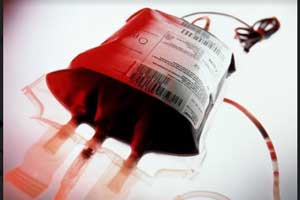- Home
- Editorial
- News
- Practice Guidelines
- Anesthesiology Guidelines
- Cancer Guidelines
- Cardiac Sciences Guidelines
- Critical Care Guidelines
- Dentistry Guidelines
- Dermatology Guidelines
- Diabetes and Endo Guidelines
- Diagnostics Guidelines
- ENT Guidelines
- Featured Practice Guidelines
- Gastroenterology Guidelines
- Geriatrics Guidelines
- Medicine Guidelines
- Nephrology Guidelines
- Neurosciences Guidelines
- Obs and Gynae Guidelines
- Ophthalmology Guidelines
- Orthopaedics Guidelines
- Paediatrics Guidelines
- Psychiatry Guidelines
- Pulmonology Guidelines
- Radiology Guidelines
- Surgery Guidelines
- Urology Guidelines
Peri-Op RBC Transfusion may lead to Postoperative VTE : JAMA

Association found between perioperative red blood cell, RBC transfusion and the development of new or progressive postoperative venous thromboembolism (VTE), according to a study published in JAMA Surgery.
Ruchika Goel and his associates conducted a study to examine the association between perioperative RBC transfusions and postoperative venous thromboembolism (VTE) within 30 days of surgery.
Researchers collected the data prospectively from the American College of Surgery National Surgical Quality Improvement Program (ACS-NSQIP) database. A total of 750,937 patients of an average age of 58 years in the ACS-NSQIP registry who underwent a surgical procedure were included in the analysis.
The primary outcome measured was the development of postoperative VTE (deep venous thrombosis [DVT] and pulmonary embolism [PE]) within 30 days of surgery that warranted therapeutic intervention. Secondary outcomes measured were DVT and PE separately.
Key findings:
- Postoperative VTE occurred in 6309 patients (0.8%) (DVT in 4336 [0.6%]; PE in 2514 [0.3%]; both DVT and PE in 541 [0.1%]).
- Perioperative RBC transfusion was associated with higher odds of VTE.
- A significant dose-response effect was observed with increased odds of VTE as the number of intraoperative and/or postoperative RBC transfusion events increased] for 1 event; 3.1 for 2 events and 4.5 for ≥3 events vs no intraoperative or postoperative RBC transfusion.
- In subgroup analyses, the association between any perioperative RBC transfusion and postoperative VTE remained statistically significant across all surgical subspecialties analyzed.
- The association between any perioperative RBC transfusion and the development of postoperative VTE also remained robust after 1:1 propensity score matching.
The study concluded that perioperative RBC transfusions may be significantly associated with the development of new or progressive postoperative VTE and if these findings are validated, then it will reinforce the importance of rigorous perioperative management of blood transfusion practices.
There are numerous cases of morbidity and mortality with hospital-associated venous thromboembolism (VTE). Venous thromboembolism contributes directly or indirectly to approximately 100 000 to 200 000 deaths annually, which represents 5% to 10% of all hospital deaths.
Venous thromboembolism (VTE) is a condition where a blood clot forms in a vein. This is most common in a leg vein, where it's known as deep vein thrombosis (DVT). A blood clot in the lungs is called pulmonary embolism (PE).
For more reference log on to
https://jamanetwork.com/journals/jamasurgery/fullarticle/2683886

Disclaimer: This site is primarily intended for healthcare professionals. Any content/information on this website does not replace the advice of medical and/or health professionals and should not be construed as medical/diagnostic advice/endorsement or prescription. Use of this site is subject to our terms of use, privacy policy, advertisement policy. © 2020 Minerva Medical Treatment Pvt Ltd